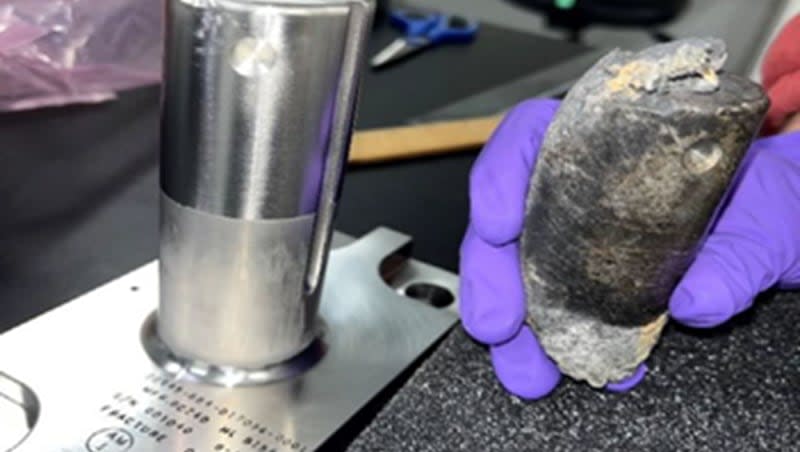NASA says space junk that crashed through Florida home came from ISS

NASA was confident that a pallet holding 5,800 pounds of depleted batteries jettisoned from the International Space Station three years ago would burn up completely when it eventually descended to Earth’s atmosphere.
But a 1 1/2-pound chunk of metal, a remnant of the cargo pallet holding the batteries, survived a scorching reentry and punched through the roof of a home in Naples, Florida, last month, narrowly missing a resident who was present at the time.
“It was a tremendous sound,” Alejandro Otero, who identified himself as the homeowner, told CNN affiliate WINK News in March, days after the incident. “It almost hit my son. He was two rooms over and heard it all.”
Otero told CNN he recognized the object as a possible piece of space debris that tore through his roof.
“Something ripped through the house and then made a big hole in the floor and on the ceiling,” Otero, who said he was not home at the time of the incident, explained. “I’m super grateful that nobody got hurt.”
NASA retrieved the errant piece of space junk and, after an analysis, announced earlier this week its determination that the chunk of Inconel, a metal alloy, belonged to them.
“As part of the analysis, NASA completed an assessment of the object’s dimensions and features compared to the released hardware and performed a materials analysis,” NASA officials said in a statement posted to the agency’s website. “Based on the examination, the agency determined the debris to be a stanchion from the NASA flight support equipment used to mount the batteries on the cargo pallet.”
NASA said it is continuing to investigate the incident and will use findings to update the data modeling it uses to determine what discarded materials will or will not survive the extreme temperatures of reentry.
“The International Space Station will perform a detailed investigation of the jettison and re-entry analysis to determine the cause of the debris survival and to update modeling and analysis, as needed,” NASA officials said. “NASA specialists use engineering models to estimate how objects heat up and break apart during atmospheric re-entry. These models require detailed input parameters and are regularly updated when debris is found to have survived atmospheric re-entry to the ground.”
Is a space debris-related death just a matter of time?
While incidents of space debris descending from low Earth orbit and surviving the extreme heat of reentry are rare, research published in 2022 by scientists at the University of British Columbia concluded it’s just a matter of time before someone is killed by falling space junk.
A research team led by Michael Byers, a political scientist at the University of British Columbia in Canada, calculated the chances of a piece of space debris falling into a populated area over the next decade. Byers and his team found the risk could be as high as 1 in 10 that a chunk of spacecraft big enough to injure someone or cause property damage will survive the trip through Earth’s atmosphere, according to a report from Space.com.
The Florida house strike joins a short list of other incidents that includes an Indonesian livestock pen’s fence crushed by a stray fuel tank, a house in the Ivory Coast damaged by a chunk of a first stage, and a woman in Tulsa, Oklahoma, walking in the park who felt a piece of rocket tap her on the shoulder, per Space.com.
NASA and other agencies across the world are looking at how to mitigate the growing volume of space debris in low orbit around Terra Prime. There are millions of pieces of space debris currently in low Earth orbit and, according to NASA, 25,000 items bigger than 10 centimeters.
According to a report from the International Association for the Advancement of Space Safety, there have been 22,142 cataloged orbiting objects that have reentered Earth’s atmosphere since 1957. And, on average, there is one spacecraft or rocket body reentering, uncontrolled, every week with an average mass of around 2,000 kilograms.

